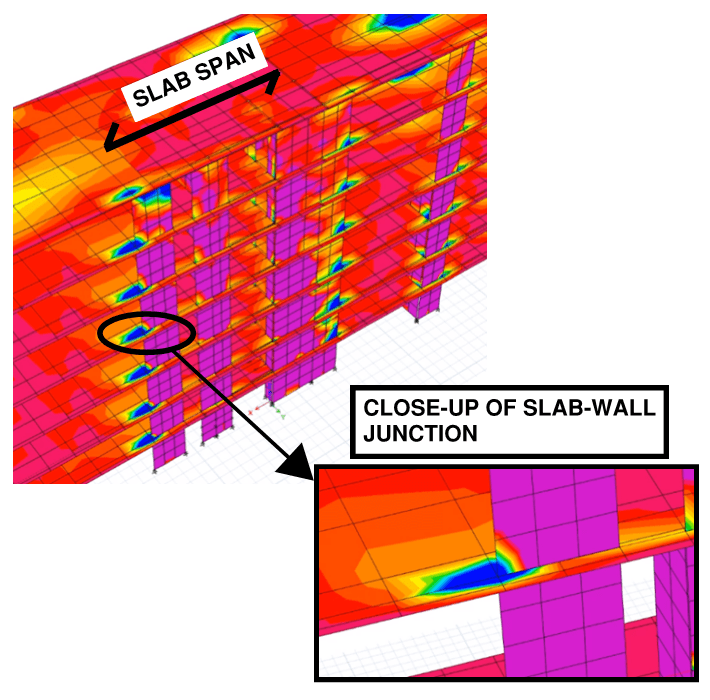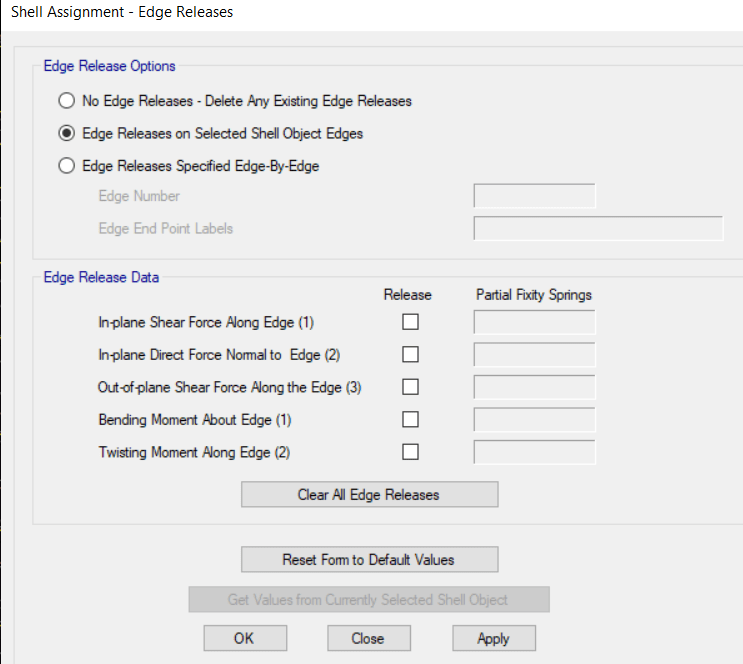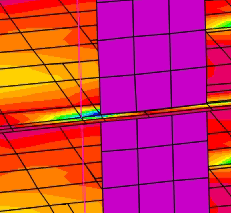Hi,
I've been having some interesting discussions with my colleagues about the design of shear walls for a 6-storey, earthquake governed, precast concrete structure. With regards to the image I've attached, the PT slabs (that are designed as one-way) are looking to be creating bending moment peaks in the shear walls. This makes sense, Etabs doesn't know that the direction that the slabs are spanning and is treating the junctions between the walls and the slabs as fixed. So, any bending moments in the slabs, near the junctions with the walls, end up being transferred into the walls.
One guy in the office is saying that we should model in columns, completely released so that they don't take any lateral loads, so that they can prop up the slabs, preventing them from deflecting and transferring moment into the nearby walls. This makes sense to me as we are only using Etabs for the shear wall design.
Someone else is recommending finding a way to "release" the connection between the walls and slabs, but I can't think of a way to do this without affecting the amount of lateral resistance the walls apply.
A third person has recommended increasing the sectional stiffness of the slabs to something like 10 (we typically crack the slabs to about 0.4). This way, the slabs are very stiff and don't deflect, and hence don't put any additional moments into the walls.
Can you please let us know your thoughts on this? The one thing we (think) we do know for sure is that the moments going into the walls from the slabs aren't actually "real" because the slabs are designed as supported by pins and are running the other way.

I've been having some interesting discussions with my colleagues about the design of shear walls for a 6-storey, earthquake governed, precast concrete structure. With regards to the image I've attached, the PT slabs (that are designed as one-way) are looking to be creating bending moment peaks in the shear walls. This makes sense, Etabs doesn't know that the direction that the slabs are spanning and is treating the junctions between the walls and the slabs as fixed. So, any bending moments in the slabs, near the junctions with the walls, end up being transferred into the walls.
One guy in the office is saying that we should model in columns, completely released so that they don't take any lateral loads, so that they can prop up the slabs, preventing them from deflecting and transferring moment into the nearby walls. This makes sense to me as we are only using Etabs for the shear wall design.
Someone else is recommending finding a way to "release" the connection between the walls and slabs, but I can't think of a way to do this without affecting the amount of lateral resistance the walls apply.
A third person has recommended increasing the sectional stiffness of the slabs to something like 10 (we typically crack the slabs to about 0.4). This way, the slabs are very stiff and don't deflect, and hence don't put any additional moments into the walls.
Can you please let us know your thoughts on this? The one thing we (think) we do know for sure is that the moments going into the walls from the slabs aren't actually "real" because the slabs are designed as supported by pins and are running the other way.



